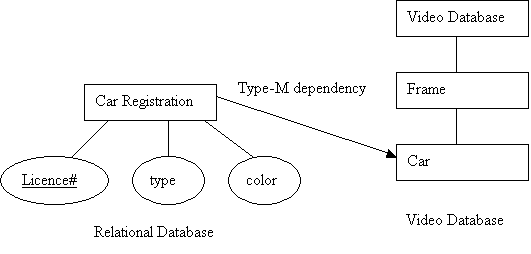Type-M Dependency Relation


1) f: X---->Y is a dependency relation
2) s1 is a similarity relation in the domain X
3) s2 is a similarity relation in the domain Y
4) suppose f(x1)=y1 and f(x2)=y2, and x1 and x2 are similar with respect
to s1, then y1 and y2 are also similar with respect to s2.
A similarity relation s1 is an equivalence relation and induces
an equivalence partitioning X/s1 on the domain X. Similarly,
a similarity relation s2 is an equivalence relation and induces
an equivalence partitioning Y/s2 on the domain Y. What we are saying
in condition 4) is that the homological image of X/s1 is a refinement of Y/s2.
In other words, if X1 of X is an equivalence set and f(X1) its homological image,
then f(X1) must be contained in some equivalence set Y2 of Y. In fact,
this procedure can be used to effectively determine wither f is a
type-M dependency relation, when the cardinality of the equvalence partitioning
is finite for both similarity relations.
From the above definition it is clear that X---I,s2--->Y is a type-M dependency relation where I is the identity relation and s2 any similarity relation. In particular, X---I,I--->Y is a type-M dependency relation. In other words if we use identity relations as similarity relations, we can regard any dependency relation as a type-M dependency relation. Therefore the type-M normal forms will be identical to the usual normal forms, as long as we use identity relations as similarity relations.
The above discussion shows type-M dependency relations are specializations of the usual dependency relations and therefore we are on safe ground. However type-M dependency relations are more strict than the usual dependency relations.